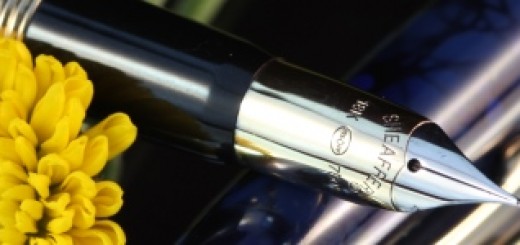WRITING A COMPOSITION by Zhelesnyak L.N.
Part 1
- Your first step in writing a composition is to decide on a subject.
- What are you interested in?
- Do you know enough about the subject?
- If not, are you interested in finding more information about it?
- Do you know where to find more information?
It is very important for the person who is writing to be interested in what he/she is writing. Your interest in the topic will make it brighter. A lack of interest in a topic will produce a composition that will fail to interest your readers.
Limiting Your Subject
It is very important to know how to limit a subject. Take for example the subject of ecology. That is an unlimited field. If you proceeded to limit a subject, the process would be as follows:
UNLIMITED: Ecology
SLIGHTLY UNLIMITED: Ecology in the United States
2,000-WORD LIMITATION: Water Pollution in the United States
1,000-WORD LIMITATION: Water Pollution in the Great Lakes
500-WORD LIMITATION: Recent Improvements in the Pollution
Level of Lake Erie
Determining the Statement of Purpose of your Composition
The statement of purpose will become clearer as you select and limit a subject. You may decide that your subject is best developed by a clear explanation. You may want to develop it by giving detailed information. You may want to prove a point or explain an attitude. Whatever your purpose may be, it is important to write it down. It will help you to stick to your subject and accomplish what you set out to do.
Write out your statement of purpose in a sentence such as the following:
The statement of purpose of this composition is to explain the nature of the recent improvements in the pollution level of Lake Erie.
This sentence will not, of course, appear in your composition, nor will it be your title. Your title will be only a few words. A statement of purpose will be a constant reminder of what you are going to write about and the direction you are going to take.
Part 2
Writing Down Your Ideas
Now that you have chosen your subject, limited it, and stated your purpose, the next step is to write down your ideas on your subject. Here the library, Internet and Reference materials will be of great use. After completing all the necessary reading you are ready to write down your ideas on your subject. Put down whatever ideas come to mind. Don’t worry about order or phrasing or style. Just get your ideas on paper. At the top of your paper write your tentative title and the statement of purpose.
| TENTATIVE TITLE
STATEMENT OF PURPOSE
MY IDEAS |
Who Killed the Trolley?
The statement of purpose of this composition is to explain why the decline of the trolley car was caused by the advent of the automobile.
Trolley was attractive and comfortable shift to automobiles rise of the automobile industry cheap trolley fares network of trolley lines out of shows foreign cars trolley was dependable cost of gas and oil automobile always available traffic problems automobile new and exciting automobile compete with trolley family auto trips camping sites rise in use of automobiles |
You can see how some of these ideas have no relationship to the statement of purpose of the composition. “Rise of the automobile industry”, “foreign cars”, “camping sites”, “cost of gas and oil”, “rise in use of automobiles” have nothing to do with the statement of purpose. You can delete them.
Part 3
Organizing Your Ideas
Now you are ready to organize your ideas. So let’s see what has left.
| TENTATIVE TITLE
STATEMENT OF PURPOSE
MY IDEAS |
Who Killed the Trolley?
The statement of purpose of this composition is to explain why the decline of the trolley car was caused by the advent of the automobile.
shift to automobiles automobile always available traffic problems automobile new and exciting automobile compete with trolley |
Now we have five points to develop: we call these points the paragraphs of the composition.
Part 4
Outlining
Now that you have organized the main topics and their related ideas for the development of the body of your composition, you are ready to make an outline. Your outline will show what ideas you are going to develop, their relationship to each other, and the order in which you will develop them.
Outlining procedure
- Write the title above the outline.
- Write the statement of purpose below your title.
- Use standard outline form.
- Begin the first word of each paragraph with a capital letter.
- Do not use periods after paragraphs.
- Make all main paragraphs parallel in form. For example, if the first main topic is a noun, all the other main topics must be nouns. If it is a prepositional phrase, the remainder of that group of subtopics must also be prepositional phrases.
Part 5
Writing your first draft
You now have a title, a statement of purpose, and you have an outline of the body to work from. You are now ready to write your first draft, which will include your introduction and conclusion.
With all this preliminary work behind you, it would seem that the actual writing would be easy. That is not always true however. Sometimes you don’t know how to start, especially with the introduction. If that happens, begin writing with the second paragraph. You can always work on the introduction later, after you have become involved into act of writing.
Don’t worry at this point about sentence structure, word choice, or punctuation. You can concentrate on those aspects when you revise your composition.
Your composition will have three basic parts – a beginning, a middle, and an end; in other words, an introduction, a body, and a conclusion.
The Introduction
The introduction has two functions: to introduce the reader to the subject and to interest the reader in it. A five-paragraph composition usually devotes one paragraph to an introduction. Effective introductions can be constructed around quotations, startling statistics, or interesting anecdotes.
Besides getting attention, each introductions tells the reader what the composition tells about, namely that the trolleys that once ran in Babbington no longer operate, and that the automobile has taken over.
The beginning of a composition should never be like the following:
In this paper I will describe the decline of the trolley and show how the automobile caused this decline.
The Body
The middle part of the composition, or the body, is the longest section. In a five-paragraph theme it would consist of three paragraphs. It is here that the writer must accomplish his/her purpose. In writing the body of your composition, be sure to observe the following points.
- Use your outline as a guide
- Keep your purpose in mind
- Divide your writing into paragraphs.
Using your outline as a guide, devote a paragraph to each mane topic. Begin each paragraph with a topic sentence. Develop each topic fully.
- Provide clear transitions. A transitional device at the beginning of a paragraph indicates how the idea to be dealt with relates to ideas in preceding paragraphs. There are number of ways to establish smooth transitions between paragraphs.
The following transitional words and phrases are the most often used in the first sentence of a new paragraph: once, eventually, next, since, therefore, as a result, in addition, in contrast, on the other hand, however, nevertheless, moreover…
The Conclusion
The conclusion of the composition should ”wrap things up”. It should leave the reader with a sense of completeness. The single most effective way to achieve a sense of completeness is to return in the conclusion to the ideas you used in the introduction. If you like, you may think of the composition as something like a sightseeing tour. The writer promises the readers an interesting tour, and then at the end the writer brings the readers back to the point where they started.
Part 6
Revising
It is in this stage of writing that the careful writers are separated from the careless. Remember the following revising rules:
- Read your composition aloud. If possible, read your work to someone who will be critical of it. Use the criticism in your revision.
- Revise from content. Have you said enough? Is your information accurate? Are your ideas clear?
- Revise for forms. Have you organized your composition clearly and logically? Have you given each main idea its own paragraph and introduced it with a topic sentence? Are all your ideas clearly related to each other?
- Revise for wording. Have you used the most precise words to express your ideas. Use a dictionary or thesaurus to check the meanings of key words in your composition. Have you used figurative language where appropriate, to make your writing more vivid?
- Check for capitalization, punctuation, and spelling. Obviously, faults of these kinds will distract your reader from what you are saying.
A Model of How to Write a Composition
WHO KILLED THE TROLLEY?
The introduction offers an anecdote and asserts the purpose of the composition: to recount how the trolley, which was enjoyed in its day, has been supplanted by the automobile.
Last month, as jackhammers split the blacktop on my street to uncover some pipes, workmen laid open the grave of a bit of local history. Beneath my street, and beneath streets all over town, lie the tracks of the Babbington and Hargrove Street Railway. The once beloved and reliable trolleys are gone, driven underground by the automobile.
The first sentence is the topic sentence, and the rest of the paragraph illustrates what the topic sentence states.
When it was in its prime, the trolley was cheap, dependable and attractive. A rider could go a long way on a few cents. The schedule was so regular that people sent messages and even groceries with the conductor to be picked up at the other end of the line. People rode in comfort on the upholstered seats. The cars were electric, and so were quiet and smokeless. The ride was slow, and passengers had a chance to get to know each other and to take in the sights as they rode. In the summer, open cars with wicker seats were added, and on holidays special excursion cars took families to amusement parks on the edge of town! People regarded the trolley as an ideal means of transportation.
The first word of this paragraph suggests a time relationship between this paragraph and the last. The writer is advancing chronologically. The first sentence also reminds the reader of the thesis of the composition, that the automobile was the undoing of the trolley system.
Then along came the automobile. It was noisy and uncomfortable and unreliable, but it caught the public’s fancy from the first. This machine would take you wherever you wanted to go whenever you felt like going there, with no waiting, no transfers, no crowds. Little by little, the trolley began to seem less attractive and the automobile more so. The trolleys became less dependable and less attractive, and more people abandoned the trolley for private cars.
Again, the first word of this paragraph provides a transition between this paragraph and the one before it that indicates a time relationship. The paragraph corresponds to number IV in the outline.
While the trolley companies were struggling with declining revenues and ailing equipment, automobiles were becoming more reliable and more plentiful. Automobile traffic was competing with trolley traffic in the streets. Intersections could get pretty confusing, and cars were becoming numerous enough to create traffic jams. Eventually the cars crowded the trolleys off the streets, and the tracks were paved over to make a wider and smoother surface for traffic.
The final paragraph constitutes the conclusion of the composition, and as such brings the reader full circle—back to the street in front of the writer’s house. The “tour” is complete. After reviewing the past, the writer projects her imagination into the future, which she envisions as repeating the past, and leaves the reader with something to think about.
The street I live on has been repaired and repaved, and the tracks are buried once again. Traffic struggles along as it did before, but there is talk of getting people out of their cars and into some other kind of transportation. The automobile is not quite so wonderful as people first thought. Will something new replace it? I hope not. I hope something old will replace it. I look forward to looking out to the street one day soon and watching a crew install tracks on top of the blacktop—trolley tracks, of course.



